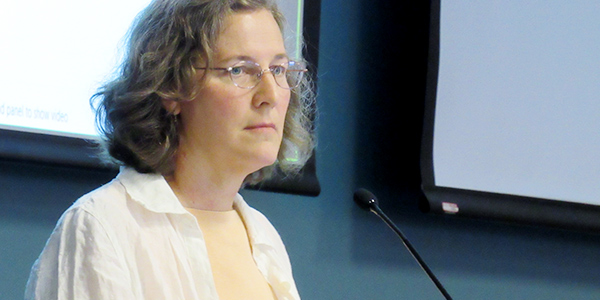By Amanda Durish Cook
CARMEL, Ind. — A growing number of stakeholders are prodding MISO to create a task team to improve transmission planning assumptions and devise ways to prevent new generation projects from becoming responsible for most transmission development.
Multiple stakeholders at a Planning Advisory Committee meeting Wednesday said MISO’s lagging renewable forecasts and increasingly pricey network upgrades for queue projects merit examination by a new task team.
Clean Grid Alliance’s Natalie McIntire said MISO’s 15-year futures — even the accelerated fleet change scenario — project smaller renewable growth than indicated by projects that have already signed interconnection agreements in the queue. Projects set to come online in the next few years eclipse all futures expectations, she said.
Representatives from the Organization of MISO States and CGA appeared before the RTO’s Board of Directors in mid-September to warn about the increasing trend of otherwise economically viable renewable projects exiting the queue because of prohibitively expensive network upgrades. (See MISO Readies MTEP 19, Debates Futures Change.)
MISO has promised to evaluate special, targeted economic planning studies in its 2020 Transmission Expansion Plan (MTEP 20), while postponing a futures overhaul until the 2021 cycle. (See MISO Halts Futures Work for 2020, Plans 2021 Rebuild.) During the PAC meeting, MISO project manager Sandy Boegeman asked stakeholders for suggestions on the targeted studies.
Several members have said the RTO cannot afford to wait another year before recasting its future scenarios. MISO will essentially snub transmission projects designed to help facilitate the renewables growth indicated by the interconnection queue, creating a self-fulfilling prophecy, they say.
The accelerated fleet change future should now be considered MISO’s base case future scenario, while the three other futures are “not at all representative of what we might expect,” McIntire said Wednesday. She called for a “better alignment” between planning assumptions and queued generation projects.
McIntire said the Helena-to-Hampton Corners second circuit project should be included in MTEP 19 as a market efficiency project, a contention her organization already put before the board. (See MISO Readies MTEP 19, Debates Futures Change.) The $36.1 million, 345-kV project, originally identified in this year’s Market Congestion Planning Study, was set to solve congestion in southern Minnesota at a 4.22:1 benefit-to-cost ratio, but MISO said the project quickly lost value once forecasted wind generation was removed from the equation.
McIntire said there was “not a very robust stakeholder process” around testing of the project, which should have been subject to more vetting and a PAC review.
She also said network upgrades borne by new generators in the queue “provide benefits well beyond simply interconnecting generators.” She pointed out that the February 2017 definitive planning phase studies showed that the batch of projects needed more than $1.3 billion in upgrades, an average of $1.5 million per megawatt of new generation.
“It is not efficient or cost-effective for MISO to plan the system one interconnection queue at a time,” said McIntire, who issued the first call for a task team to examine network upgrades and transmission planning. She said MISO should also consider creating a new transmission project category that allows for cost sharing between generators and load.
At a special workshop on MTEP futures Thursday, MISO Planning Manager Tony Hunziker said the RTO is developing a strawman proposal on new futures development for stakeholder review at an Oct. 17 workshop.
Hunziker agreed that industry projections are already “outpacing” even MISO’s accelerated fleet change future, which predicts wind and solar will account for 29% of capacity by 2033. He said there are signs that wind and solar generation will make up more than 30% of the generation mix by that time.
CGA’s Sean Brady noted that some MISO states are targeting a 40 to 50% renewables mix by the mid-2030s.
Veriquest Group’s David Harlan said MISO’s reliance on planning for new generation based on a reliability-focused planning reserve margin might now be “too narrow” to use in transmission planning. He said MISO should consider that the future generation portfolio will have ramping, reactive power and voltage support needs among others.
Hunziker said MISO could move to a “dynamic” — instead of static — planning reserve margin for transmission planning. Though still undefined by the RTO, a dynamic planning reserve margin could change in out-years based on forecasts. Currently, MISO’s futures ensure its planning reserve margin is met.
Some stakeholders have also suggested MISO create a member survey to better capture its members’ carbon-reduction goals and resource additions and retirements.
MISO is also asking whether it should split its footprint into subsections for planning studies or allow for different input assumptions at the local resource zone level, state level, or the MISO Midwest and South regions. Hunziker said subregional futures would require significantly more work.






